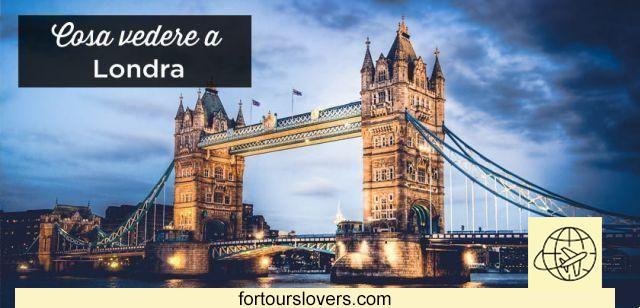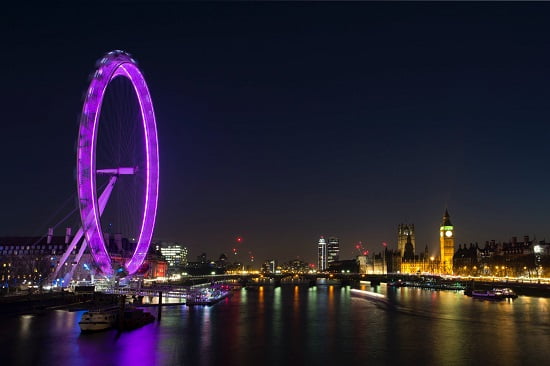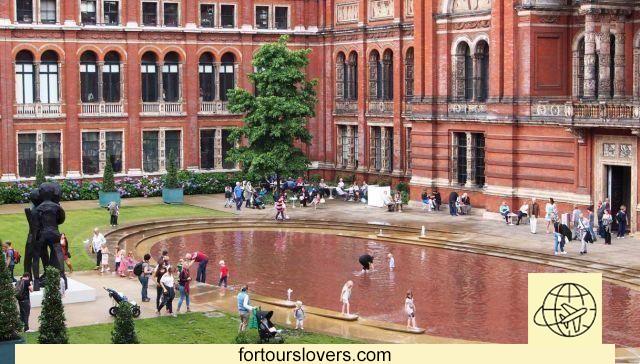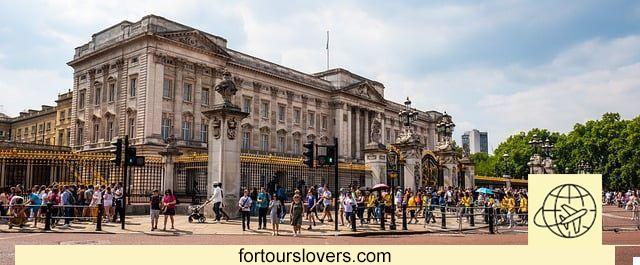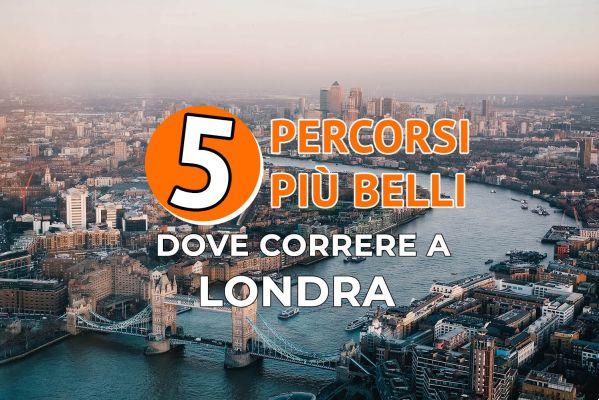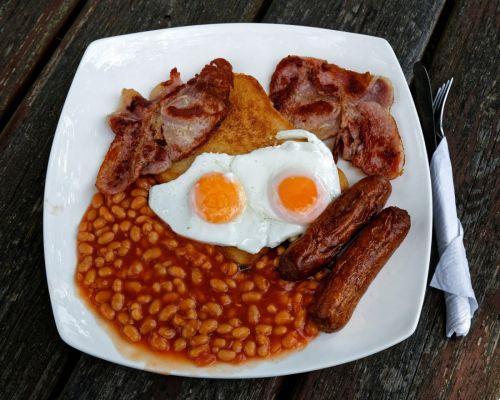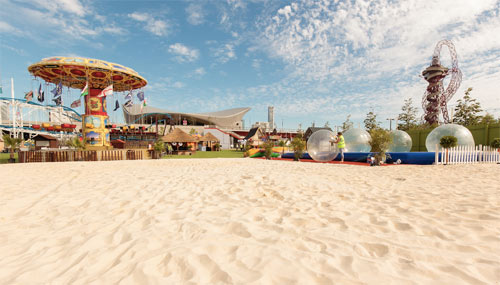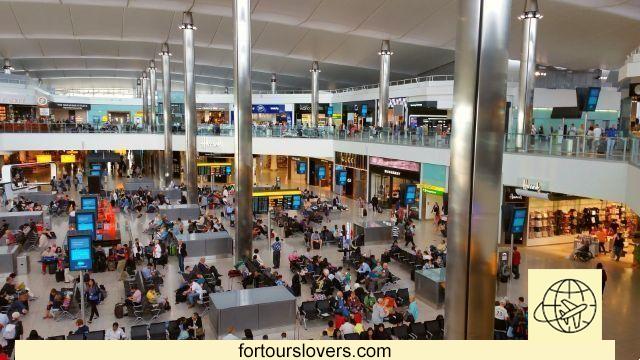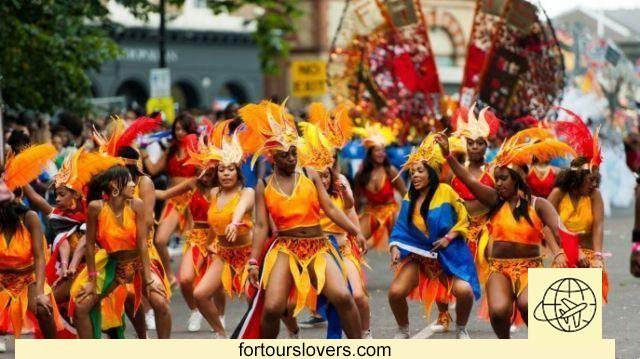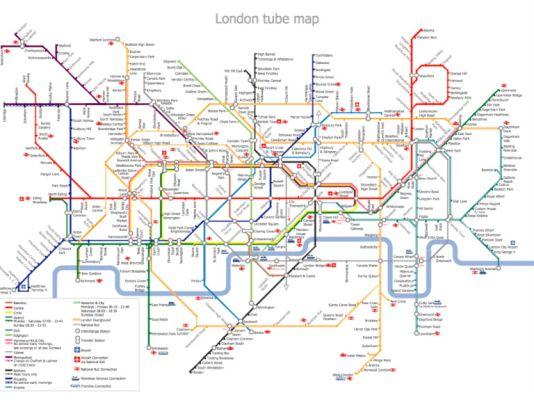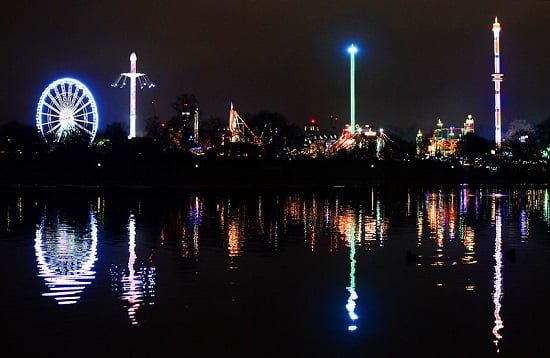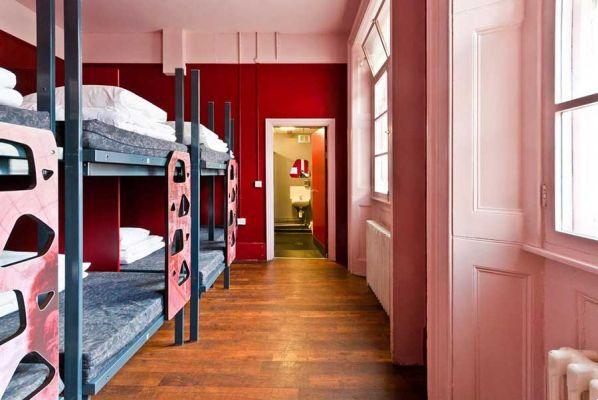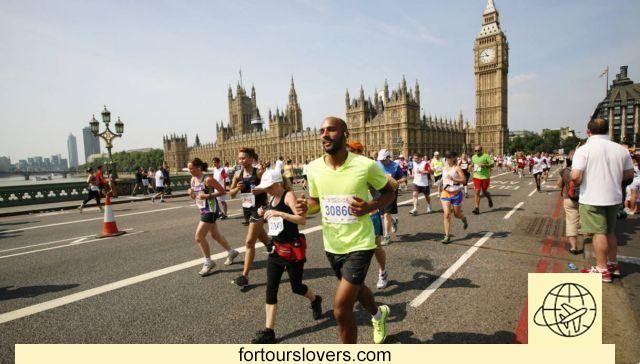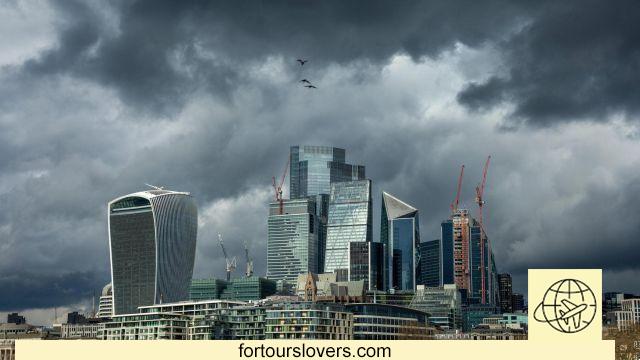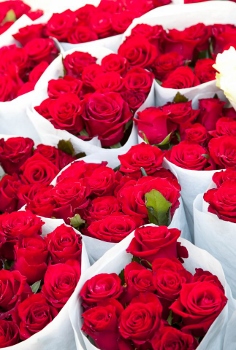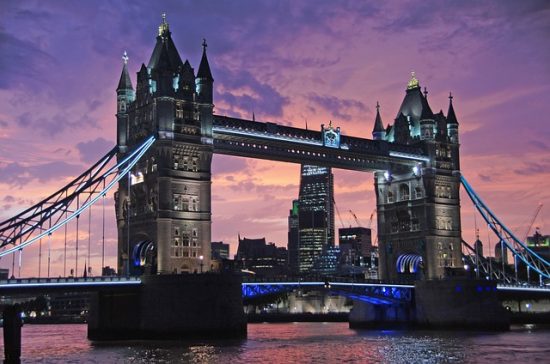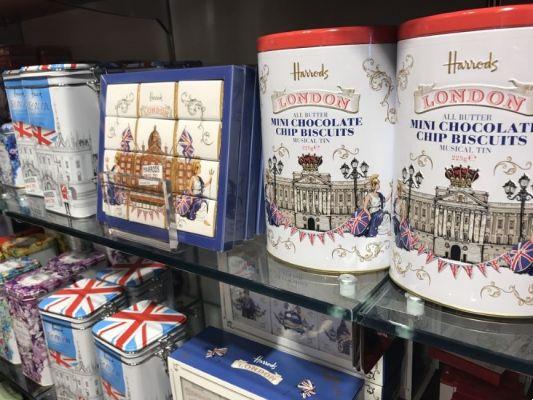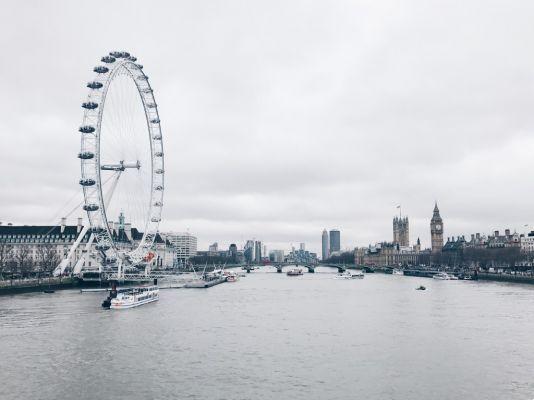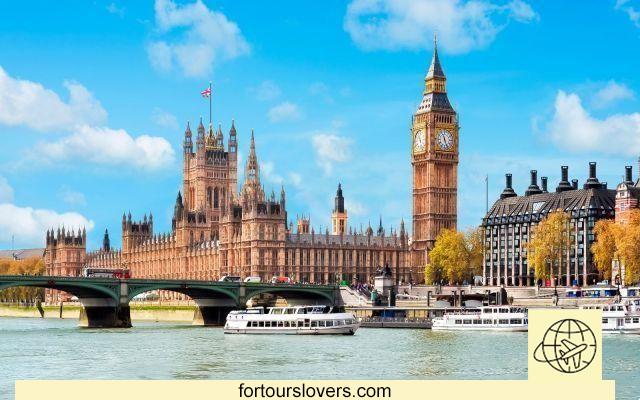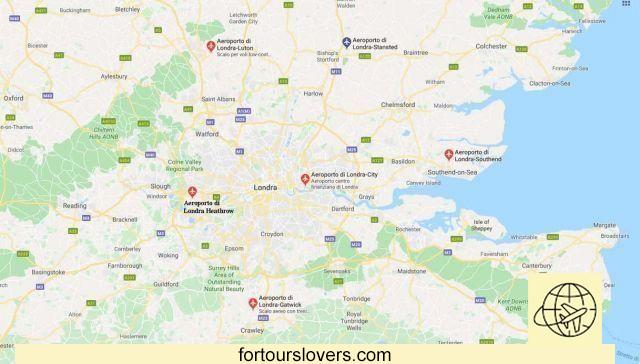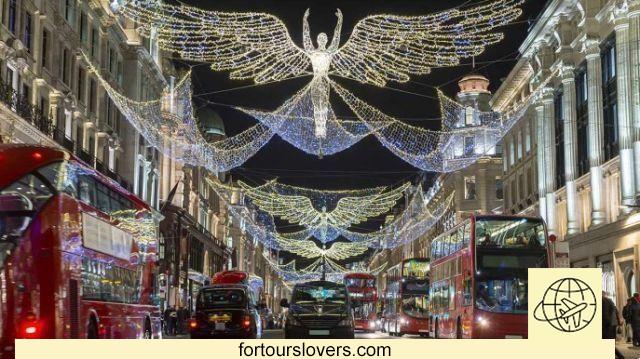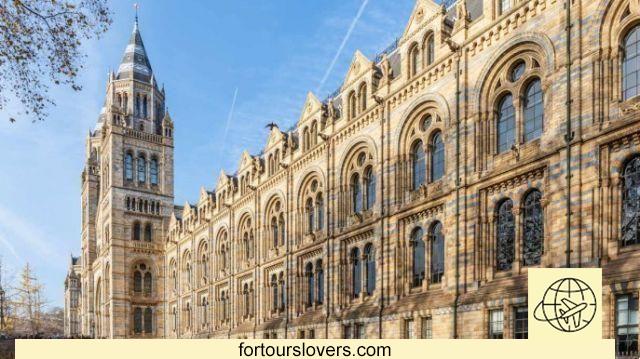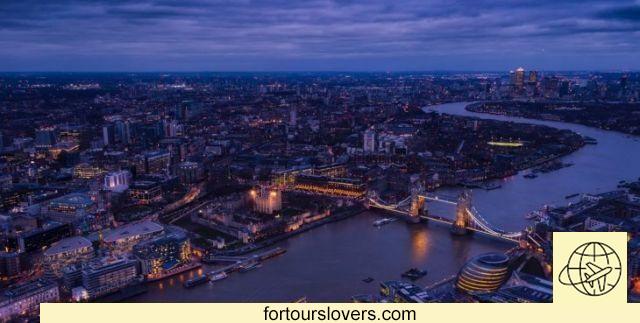
London
12 things to do and see in London and 3 not to doCosmopolitanism is the true figure of London and it is therefore reasonable to think that the Brexit (the United Kingdom's exit from the European Union sanctioned by a referendum in March 2017) will not be able to scratch this figure. Among other things, confirming what has just been said, it must be remembered that the option prevailed in the city "Remain". Moreover, the multiculturalism of London is not a recent acquisition. According to some historians, it dates back to the seventeenth century, although undoubtedly the greatest expansion took place during the nineteenth and twentieth centuries with arrivals from nearby Ireland and the colonies of the Commonwealth. Therefore, anyone who wants to get on the trail of London's genius loci will inevitably have to start from his own multiculturalism (over 250 nationalities present). This does not mean that over time the city has not developed its own characteristics both from an economic and social point of view. The peculiarities of London are all attributable to his capital status: the decisions that matter are all made here, be it policy and, above all, of finance. Then there are the fashions in the field of music and clothing: it is in London, in fact, that the trends destined to guide consumption throughout the Western world are almost always born. Given these premises, it is clear that drawing up a list of things to do and see in London is necessarily a partial operation. An operation, however, which can be useful for a first approach to a city that everyone should visit at least once in their life. Happy reading.
1 Trafalgar Square
Trafalgar Square is the obligatory starting point of a visit to London. The main advantage of this square is that despite being in constant transformation, it has never lost its historical dimension. In other words, despite being the "Political square" of the city, where events on national and international issues usually take place, always remains the square of Horatio Nelson, the hero of the victorious battle of 1805 against the French troops. There statue Nelson occupies the center of Trafalgar Square surrounded by 4 leoni they soon became a favorite subject for the classic London souvenir photo. Then there are the fountains, the statues of George IV, of the generals Sir Charles James Napier and Sir Henry Havelock, and finally a movable statue dedicated to contemporary art and periodically replaced by the city administration. In short, Trafalgar Square is the London tourist lounge, base for subsequent trips to discover the many city attractions starting from the nearby National Gallery (see next point).
2 National Gallery
National Gallery it's the very first stop right after setting foot in Trafalgar Square. L'input in fact, the museum is located right on the square and what's more it is free (temporary exhibitions for a fee). It is about one of the most important art galleries in the world with over 2000 masterpieces for a time span ranging from '200 to 900. Piero della Francesca, Michelangelo, Raphael, Leonardo, Botticelli, Caravaggio, Titian: Italian art is greatly represented, but there is no lack of works by Rembrandt, Cezanne, Van Gogh, Picasso and others. In short, even if you are not particularly fond of painting, the National Gallery of London will amaze you equally both for the size of the rooms and for the multiple opportunities for recreation that the structure makes available between refreshment points e shopping area. For all these reasons, millions of visitors visit the gallery every year.
Gallery looking the following orari di apertura:
| Days | Working Time |
| Mon - Thu | 10:00 18:00 |
| Fri | 10:00 21:00 |
| Sat - Sun | 10:00 18:00 |
For more information on the history, works and methods of visiting the museum consult the Official site: www.nationalgallery.org.uk (Spanish version available).
3 Buckingham Palace
Located between St. James's Park, Green Park e Hyde Park (3 of London's nine Royal Parks) Buckingham Palace and the residence of the English sovereigns. It wasn't always like that. The castle, in fact, dates back to the early 1705th century, to be precise XNUMX, and was built by John Sheffield, Duke of Buckingam, as a country residence. Only later did it become royal property thanks to the purchase, and simultaneous restructuring, by King George III. The extension works continued until 1837 year in which the Queen Victoria was the first to take official residence in the palace. Buckingam Palace is open only from 21 July to the end of September when the queen and the court leave to spend their holidays in Scotland. In reality, only a small part (about twenty rooms in all) of the more than 700 rooms that make up the residence can be visited. Also worth seeing is the Changing of the guard, the succession of His Majesty's soldiers. The ceremony takes place (every day May and June; every two days August-March) at 11.30 and is one of the most popular tourist attractions in London. It is therefore recommended that you arrive at Buckingham Palace at least 1 hour before the start. For learn more on the visit of Buckingam Palace and on the Changing of the Guard consult the respective sites: www.royalcollection.org.uk and changing-guard.com.
4 Palace of Westminster
UNESCO World Heritage Site since 1987, Westiminster Palace is among the London's main tourist attractions. Three, in a nutshell, the reasons behind the success:neo-Gothic imprint which makes the building seem older than it actually is; secondly the "Big Ben", the name commonly referred to as St. Stephen's Tower, one of the two towers (the other being the Victoria Tower) of the building; finally the Houses of the British Parliament (House of Common and House of Lord) both located within this building. The seats of the two rooms are public: it is necessary to line up in front of the St. Stephen's Entrance and wait to be sorted, at the end of careful checks, in the space reserved for visitors. Furthermore, during the summer period (1st August-30th September) they take place guided tours of the "Houses of Parliament". The formulas are different (individual, family, group, private, school visits, with audio guide etc.) so please refer to the official website of the English parliament for the necessary further information: https://www.parliament.uk/visiting/visiting -and-tours. As for the Big Ben visit is reserved for British citizens only. Learn more about the history of the tower (named after Queen Elizabeth since 2012), on the clock and bell from which the name seems to derive, see the link: https://www.parliament.uk/visiting/visiting-and-tours/tours-of-parliament/ bigben.
5 Westminster Abbey
In addition to being the church where the English kings have been honored for almost a thousand years (the first was William the Conqueror on 25 December 1066), Westminster Abbey it is also the building where I am buried some of the most influential personalities in the history of Western thought. Just to name three: Isaac Newton, the father of modern physics; Charles Darwin, theorist of evolutionism; and finally Charles Dickens, the most authoritative interpreter of that social novel which during the nineteenth century gave voice to the sufferings of the poorer classes of England. Of the original Norman imprint, the building has kept only the crypt intact. For the rest, Westminster Abbey presents itself both outside and inside as a triumph ofgothic architecture (UNESCO World Heritage Site since 1987). The church we see today took shape in five hundred years: from 1245, the year in which Henry III began the work, to 1745 when the towers on the west side were completed. So from the thirteenth to the eighteenth century, a long period of time during which the liturgy changed rather than the architecture with the advent of Protestant reform which in the United Kingdom led, as we know, to the affirmation ofAnglicanism. Westminster, however, is not just history: on the contrary, the parish community is more active than ever, just as the bond of Londoners with the events concerning the royal house is still strong: from participation in Lady Diana's funeral in 1997, to the wedding of William and Kate in 2011, a worldwide event followed by over two billion viewers.
For more information on activities and visiting hours consult the place: www.westminster-abbey.org (Spanish version available).
6 Piccadilly Circus
The place that in the collective imagination means London is a roundabout. Yes, why Piccadilly Circus this is: one traffic island among some of the main ones London road arteries (Regent Street, Piccadilly Street, Covent Street, Shaftesbury Avenue, Haymarket). We are in the heart of the West End, a few minutes walk from Trafalgar Square which, as we have seen, is the starting point for discovering the city. Piccadilly is a crowded intersection whose popularity is essentially due to two factors: the presence of displays and led screens for advertising of major world brands and statue of the Angel of Christian Charity (Angel of Christian Charity) which depicts Anteros, in Greek mythology the deity of reciprocated love (brother of the most famous Eros). Here, under this small statue built at the end of the nineteenth century to celebrate the magnanimity of Lord Shaftesbury, young Londoners have always used to meet and then scatter in the many shops, bars, restaurants, theaters all around the square. Finally a curiosity: the name Piccadilly derives from a particular type of shirt collar very popular between the 500th and 600th centuries. A tailor, a certain Robert Baker, made his fortune by specializing in the sewing of the "Picadils", which allowed him to buy a large piece of land in what was then the London countryside, to build his home there. Centuries later, however, Piccadilly Circus, from a country place as it was, has become one small Times Square (New York), hence its popularity.
7 British Museum
with over 5 million visitors a year the British Museum is by far the main one London tourist destination. The history of this museum dates back to the mid-700th century when the naturalist Sir Hans Sloane he ceded his collection of vegetables and other artifacts to the British crown in exchange for £ 20000. Thus was born in 1759 the British Museum which in the course of the nineteenth and twentieth centuries has increasingly expanded to reach such dimensions (over 4 km of galleries) that it requires at least half a day for a barely exhaustive visit. Celtic, Egyptian, Greek, Roman finds, ethnographic sections dedicated to Asia and Africa, millions of ancient prints and drawings: a wealth that has undoubtedly been accumulated also by virtue of British colonial past. Proof of this is the dispute with Greece over the marble stolen at the beginning of the 800th century on Parthenon in Athens by Lord Elgin (Thomas Bruce, Earl of Elgin) with a controversial agreement with the Ottoman Empire. A must see there Great Court, the central hall of the museum built where the Royal Library once stood. Designed in 2000 byarchistar Norman Foster, the Great Court is the largest covered square in Europe and, ça va sans dire, what stands out most is the dome formed by more than 1500 glass panels each of different shapes. An entirely secondary detail, the Great Court houses the desk on which Karl Marx worked on the monumental “Das Kapital”, an essay that more than any other changed the course of history in the twentieth century.
For the opening hours (FREE) of the British Museum see table:
| Days | Working Time |
| Mon - Thu | 10:00 17:30 |
| Fri | 10:00 20:30 |
| Sat - Sun | 10:00 17:30 |
More information on Official site: www.britishmuseum.org.
8 St. Paul's Cathedral
Among the obligatory stops on a holiday in London, the St. Paul's Cathedral, a masterpiece ofarchitect Christopher Wren who dedicated over 40 years of his life to its realization, from 1666 to 1708. Wren is buried in the Cathedral along with personalities of the caliber of Winston Churchill, Lawrence of Arabia, Horace Nelson and Duke of Wellington, the latter architect of the victory against Napoleon at Waterloo. Except, unlike these large figures, Wren's grave is smaller. Modesty, however, has nothing to do with it. Wren believed, not without reason, that her funeral monument coincided with the entire church. Church in which to stand out for grandeur is above all the dome, which is also the highlight of the visit. To reach the top of St. Paul's Cathedral you must first walk the 259 steps of the “Whispering Gallery“; then another 119 of the "Stone Gallery"; and finally the 150 steps of the "Gold Gallery". Three galleries, one more beautiful than the other, even if the most attractive tourist detail, and which invariably attracts the curiosity of visitors, can be found in the "" Whispering Gallery "(transl." Gallery of sighs "), so called because it is enough to sigh something against the wall to hear the echo from more than 30 meters away. For more information on opening hours, prices and visiting methods, consult the Official site: www.stpauls.co.uk.
9 Tower of London
Royal residence, prison, state mint, crown jewels safe, arsenal: in almost a thousand years of history, the Tower of London had different functions but a single denominator: impregnability. For this reason it is one a must on a visit to London, as it represents a perfect compendium of its history. Within the walls of this fortress on the Thames they were imprisoned Anna Bolena, Maria Stuarda, Lady Jane Gray e the two teenage sons of Henry IV, the latter even locked up at the hands of their uncle Richard III. So stories of conspiracies, intrigues of power, transversal vendettas that in most cases have marked the history of Europe in the centuries to come. To lead you to discover the Tower of London and its secrets are the Yeoman Warders, the detachment of the British Royal Guards who still wear the uniforms of the Tudor dynasty today. Yeoman Warders, also known as Beefeater (trad. "Beef eaters"), probably by way of mockery for being considered the guardians of the sovereign's buffet. The guards, in their XNUMXth century uniforms, are not the only folkloric element of the visit. Also ravens flying around the perimeter of the fortress have their own historical charm. It is said, in fact, that Charles II of England was convinced that the disappearance of the birds would represent a harbinger of doom for the Royal House. He was therefore prepared to clip its wings in order to prevent flight for long distances. A practice that continues today with a lot of trainer (Ravenmaster), headquartered at the Wakefield Tower, one of the 20 towers of the fortress. The most important, both in terms of history and tourism, however, remains the White tower, whose construction dates back to 1066 by the hand of William the Conqueror.
For the orari di apertura of the London Tower see the table:
| Days | Working Time |
| Tue - Sat | 09:00 16:30 |
| Sun - Mon | 10:00 16:30 |
For more information on the history, prices and methods of visiting consult the Official site: www.hrp.org.uk
10 London Eye
Unless you suffer from vertigo, the ride on the London Eye, until a few years ago the largest Ferris wheel in the world (surpassed by the one in Las Vegas), is one of the must-do things once in London. Initially (2000) the facility had a five-year temporary permit after which it would have to move elsewhere. On the other hand, the success achieved meant that the permit became permanent to the great satisfaction of tourists, who, especially at nightfall, love to board one of the capsules (max. 25 people) of the wheel. London Eye is open every day except December 25th and two weeks of routine maintenance, usually in January. In any case, both for the purchase of the ticket and for the opening hours (which vary depending on the time of year) consult the place: www.londoneye.com.
11 Tower Bridge
Another unmissable stop on a London holiday is definitely Tower Bridge, drawbridge which since 1886 has joined the north and south banks of the Thames. For 90 years, until 1976, an ingenious step was taken to raise the bridge steam engine today exhibited at the Tower Bridge Exhibition, the museum space that collects the history of the structure and from which one can see magnificent view of the river, the city, the bridge and its two towers. A view that - as already mentioned with regard to the London Eye - becomes even majestic in the evening, giving suggestions that deserve to be immortalized. Tower Bridge Exhibition is open every day from 10:00 to 17:30 from April to September and from 09:30 to 17:00 from October to March. For more information visit the Official site: www.towerbridge.org.uk (Spanish version available).
12 Hyde Park
Public parks in London are everywhere. From a historical point of view, the credit goes to the Royal House which has always used these huge green spaces not only as a private hunting reserve, but also for duels, executions and horse races. This is a circumstance that has forced real estate developers to direct their appetites elsewhere, allowing the city to maintain an altogether acceptable balance between urban expansion and green areas. THE London's royal parks are 9 (Hyde Park, Kensington Garden, St James's Park, Regent's Park, Greenwich Park, Battersea Park, Hampstead Heath, Richmond Park, Kew Gardens) and they all deserve to be visited for the big one landscape-environmental versatility. However, if the time available is tight, we recommend a visit to Hyde Park. For two reasons: easy accessibility, both on foot and by public transport, and so Speaker's Corner, the corner of the park intended for rallies. Speaker's Corner is located in the northeastern part of Hyde Park, not far from another major city attraction such as Marble Arch, the triumphal arch of London, and is the only space in the whole city where it is possible to hold a public meeting without the prior authorization of the police. A very ancient tradition which they also used among others Marx e Lenin. The boat tour on the Serpentine Lake, the L-shaped lake that divides Hyde Park from Kensington Gardens.
For more information on the park visit the Official site: www.royalparks.org.uk/parks/hyde-park.
1 Do not violate the rules of civil coexistence
Occupying the escalators on the left, getting dirty, talking loudly, not respecting the queue, using public transport without a ticket… these are all things that Londoners notice and do not appreciate at all. Respect for the rules of civil coexistence is essential in these parts. In reality it is everywhere but here, if necessary, they are much less indulgent than in the Mediterranean countries. Warned.
2 Beware of pickpockets
The "classic" warnings of all large cities apply: do not run with a lot of cash; do not keep the wallet in plain sight; do not leave the bag unattended; avoid wearing jewels, necklaces, watches, bracelets of great value; do not go alone at night etc.. For the rest, do not worry: London is a safe city, obviously as a metropolis of over 8 million inhabitants can be.
3 Don't limit yourself to the usual rounds
Those listed so far are just some of the main tourist attractions in London. To be clear, those in which you will find thousands of other tourists like you. Now the advice is not not to visit them, otherwise it would be paradoxical to have written about them. Simply, on vacation it is also right to improvise: turning into a side street, entering a shop, heading towards that square moved by nothing but curiosity. In London it is absolutely necessary to do so. After all, it is a city with so many stimuli that it will be normal to follow instinct a little.




